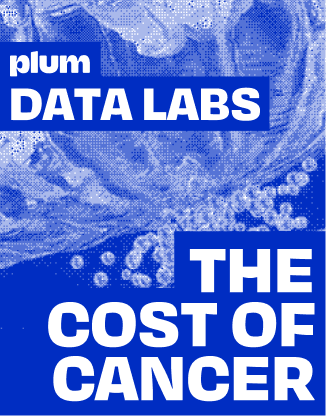Hospitalizations can be difficult to cope with. It is not only the patient who suffers; he, his family, and his friends also go through a challenging time. They don’t just worry about whether or not the patient is given the medicines and attention on time, but expensive medical bills also leave them distressed. In such difficult times, health insurance policies work as a financial support system for many.
However, the process of filing claims for health insurance is often considered to be opaque and time-consuming. Your loved one is undergoing treatment and taking tests, but instead of being there for them, you find yourself stuck filing health claims forms and lining up the paperwork required. Or managing other documentation when you are not in the best frame.
We at Plum have kept this in mind and made simple efforts to make your journey easy into the world of health insurance by simplifying your claims process. Before we move on to understand how Plum has made it easy, let us find out what health insurance claims are and how they work.
Claims in General and Claims in Health Insurance
Claims, in general, mean to take or assert ownership of something or to state something as true. Health insurance claims, on the other hand, as per the definition given by Investopedia, are formal requests by a policyholder to an insurance company for compensation in response to a covered loss or policy event. The insurance company validates or denies the claim after assessing it. If approved, the insurance company will issue payment to the insured or an approved, interested party on behalf of the insured.
Regarding insurance claims, you must have come across two popular terms, Cashless Claims and Reimbursement Claims.
Before diving deeper into these claims, let’s understand two close terms: networked and non-networked hospitals.
Network and Non-Network Hospitals
Any hospital that agrees with an insurance company to provide cashless treatment is referred to as a Network Hospital. On the flip side, hospitals that are not a part of the network of an insurance company are called non-network hospitals.
We hope that was simple to understand.
Now let’s see how these come into play and what benefits they offer.
Cashless Claims
Let’s look at a simple example to understand what cashless claims are. Mrs Batra is a health insurance policyholder who opted for cashless insurance on her health insurance plan. So, in case of hospitalization, she benefits from cashless services at any hospital that has a tie-up with her insurance company. All Mrs Batra has to do to avail of her cashless services is to inform her insurer 3 to 4 days before getting admitted and fill out the pre-authorization form. Now you might wonder, what if Mrs Batra has an emergency, an unforeseen treatment? How will she inform her insurer in advance? In case of emergencies, a quick intimation to the insurer will also work, and the pre-authorization form will be required to be filled out within 24hrs of her hospitalization.
To summarize, in cashless claim settlement, the policyholders can get medical treatment at a network hospital without burdening their pockets during hospitalization.
Reimbursement Claims
Reimbursement claims are made when you get treated in a non-network hospital or do not opt for cashless benefits in your health plan. Let’s look at two scenarios from the lives of Mr Iyer and Mr Ghosh to understand the concept of reimbursement claims.
Mr Iyer has a health insurance plan and has decided to get his treatment done at a network hospital for an illness covered by his policy. However, he had also decided not to go for cashless benefits while purchasing his policy, unlike in the case of Mrs Batra’s.
So, Mr Iyer gave a prior intimation to the insurer and paid out of his own pocket for the treatment he took at the network hospital. However, he raised a reimbursement claim with his insurer when discharged from the hospital. He submitted the receipts and medical bills as proof of his medical expenses. In return, the full medical expenditure was reimbursed to Mr Iyer after the approval of his claim by the insurance company. This was an example of a reimbursement claim settlement in the case of treatment at a network hospital. Let’s see how the same works when you get treatment at a non-network hospital.
Mr Ghosh, a health insurance policyholder, had to be hospitalized at a non-network hospital because of an emergency. Considering he is now getting treatment at a hospital his insurance company does not have a tie-up with, he would not be eligible for cashless hospitalization as the benefit is applicable at network hospitals only. Therefore, when he was discharged from the hospital, he had to clear the entire expense incurred for his treatment from his pocket. However, after his discharge from the hospital, Mr Ghosh made a reimbursement claim by submitting original medical reports, bills, Discharge certificates, or Discharge summaries to the insurer. When his claim was approved, the insurance company reimbursed him for the entire cost. To sum up, cashless claims do not apply to non-network hospitals.
Things to remember while filing a claim
When you are busy taking care of a loved one or yourself at the hospital, it is easy to miss out on things you require to make a health insurance claim. So, to help you remember all the essentials while making a health insurance claim, we have created a checklist, so you don’t miss out on anything and have a smooth claim settlement avoiding any last-minute surprises.
1. Documents Required
Paperwork is definitely the most tedious part of any procedure, but what if you have a required documentation checklist? Won’t it be easier to line up the documents without missing any? Of course, it will be. So, here we have a checklist for you that you can make a note of.
- Pre-authorization form
- Medical bills
- Medical reports
- Valid ID proof of the insured
- Copy of the insurance policy bond
- Cancelled cheque
Apart from the above-mentioned documents, your insurance company might have other document requirements that you must also be aware of. So make sure to get a list of documents required to make a health insurance claim while buying an insurance policy.
2. Sum Insured Limit
Health insurance claims are allowed only up to the sum insured. The sum insured is the maximum value for a year that your Insurance Company can pay in case you are hospitalized. Any amount above and beyond the sum insured will have to be removed from your pocket.
For instance, if your sum insured is 2 lacs and you are hospitalized twice in 1 year. In the first incident, your hospital bill was 1.5 lacs; in the second, your hospital bill is 70 thousand, and your total hospital expense for the year will be 2.2 lacs. Since the total amount is more than the sum insured, the insurance company will pay 2 lacs of the total amount while the remaining 20 thousand will be cleared by the insured.
Since we are talking about limits in health insurance, you should be aware of room rent and ICU limits.
Room rent limit and ICU charges are important factors when choosing your health insurance policy. Usually, the room rent limit is fixed as 1% or 2% of the sum insured daily, and ICU charges are double the normal, i.e. 2% or 4% of the sum insured. To learn more about how room limits and ICU charges work under a health plan, take a quick read of our Plum blog, Demystifying room rent & ICU limits.
3. Exclusions
Exclusions are the cases for which the insurance company does not provide coverage. So, claims made for those exclusions will be rejected by the insurance company.
Injuries due to war, HIV, intentional injuries, congenital diseases, etc., are a few examples of exclusions in health coverage. However, these might not be the same for all insurance companies or all health coverage plans. So, to avoid any surprises at the time of claims, you must check all the exclusions of your health coverage before signing up for a health plan.
Another aspect of health insurance claims is waiting periods which are different for different situations.
A waiting period of 4 years
While taking health insurance, if the insured declares that he has pre-existing diseases like high blood pressure, diabetes, thyroid, etc., the insurance company insists on medical tests to assess the level of impact of the diseases on the policyholder. For instance, if Mrs Batra is a diabetes patient, she will have to take a test for the insurance company; based on the reports, the insurer will decide on the waiting period. Usually, the waiting period is 4 years. This implies that any hospital-related expenses related to pre-existing diseases can be claimed only after 4 years with the insurer. To avoid waiting periods, it is often suggested to take health insurance policies early in life.
Waiting period 1-2 years
The policyholder normally has one to two years of waiting for specific ailments like ENT disorders, osteoporosis, hernia, non-infective Arthritis, Cataract, Hemorrhoids, Fissure, etc. So, the claims for specific ailments can only be made after 1-2 years of waiting. Make sure to know your waiting period from your insurer.
4. Timelines
As mentioned before, there is a timeline for submitting the pre-authorization form for making a cashless claim. In case of planned treatment, the pre-authorization form should be submitted 3-4 days in advance, while in case of an emergency, the form should be submitted within the 24hrs of hospitalization.
If the timelines are not followed, the claim might get delayed, resulting in a delay in the treatments if you opt for a cashless claim.
5. List of networked hospitals
Cashless claim settlement is only possible if treatments are availed at a hospital and the insurance company has a tie-up. So imagine you have an emergency and want to opt for a cashless claim, but you are not very well aware of the network hospitals. What will you do? You can’t afford to delay the treatment.
The best you can do is have a list of network hospitals to prepare for such emergencies. Ask your insurer to provide you with a list of network hospitals so that you don’t have to wait or waste time in case of an emergency.
6. The validity of the insurance policy
Health insurance claims are only applicable if your health plan is valid. If your health policy has expired, the insurance company will reject your claim. So, to avoid any inconvenience in the emergency, the insured must ensure that the policy continues without a lapse by updating one’s insurance policy.
Plum can make claims easier for you
To trust your health insurance and make an informed decision, knowing it well is crucial. Plum ensures you know everything about your health plan and insurance claims and answers all your queries.
Wondering how? With the help of the Plum app.
The main aim of the Plum app is to simplify your claims process. It helps you understand your insurance coverage without making multiple calls and rounds to the insurance company. Not only that, but it also highlights what’s covered and not covered under your insurance policy. So, there won’t be any surprises for you while you make a claim. The Plum app also lets you see the list of hospitals nearby where you can go for a cashless treatment under your insurance policy.
If you find filing claims a bit complicated, the step-by-step process for making both cashless and reimbursement claims has been elaborated upon on the app for your convenience. So that you don’t get lost in the paperwork or encounter any surprises during an emergency.
Our customer support team works directly with the insurer and makes a point to expedite your claims process. “Poonam did a fabulous job with our maternity claim. She was always there and followed up even before I raised any request and kept me updated on the status of my claim at all times. You have amazing people at Plum.” said Arun Raj, Head of Design at Rocketlane.
Not to mention, if you have any queries related to your health plan at any time of the day, Plum's 24X7 live chat support will answer them all for you.
Get your health plan with Plum if you want a hassle-free claims process and a simplified group health insurance policy.
.avif)










.avif)














